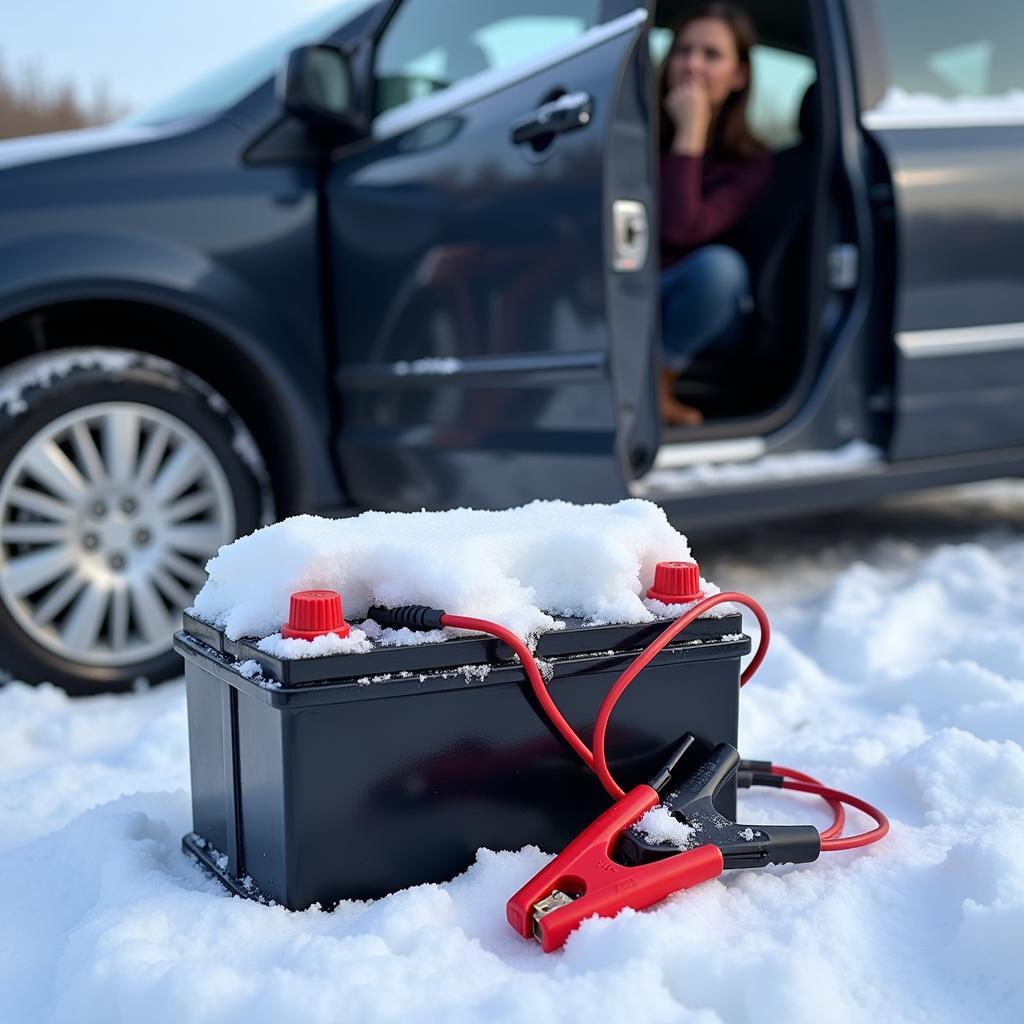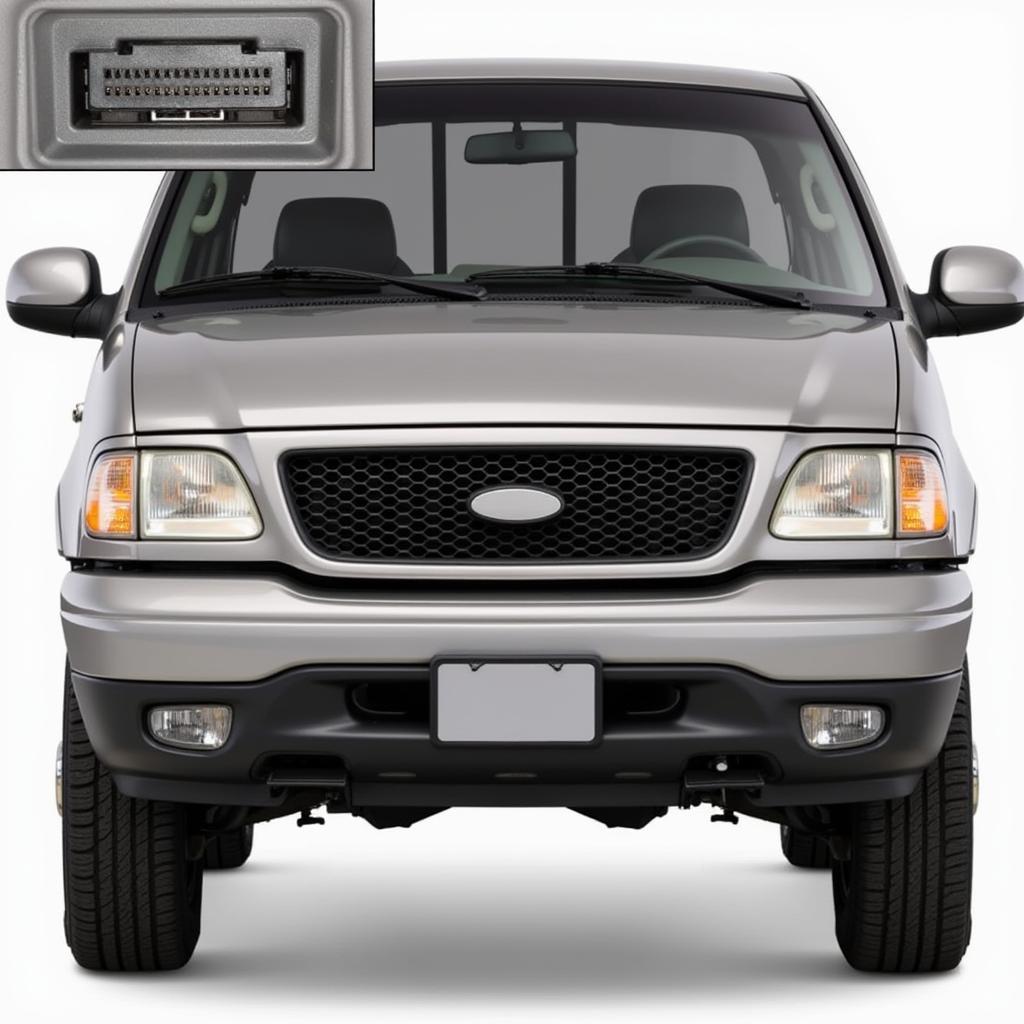A dead battery in the cold is a common winter woe, leaving many drivers stranded. But understanding why cold weather impacts your battery and knowing how to prevent and address this issue can save you time, money, and frustration. This article will equip you with the knowledge to tackle a dead battery in the cold like a pro.
 Car Battery Dead in the Snow
Car Battery Dead in the Snow
Cold temperatures significantly reduce a car battery’s cranking power, the ability to start your engine. This occurs because the chemical reactions inside the battery slow down in the cold, making it harder to produce the necessary current. Furthermore, engine oil thickens in low temperatures, requiring more power from the battery to turn over the engine. This increased demand combined with reduced battery performance is a recipe for a dead battery. You can find yourself dealing with similar frustrating warning light situations, like those described in articles about bmw x3 airbag 4×4 and brake warning lights all on.
Why Does Cold Weather Kill Car Batteries?
Several factors contribute to dead batteries in cold weather. First, as mentioned, the chemical reactions within the battery slow down. Second, the battery’s internal resistance increases, further hindering current flow. Third, the already stressed battery has to power other electrical systems like headlights, heaters, and defrosters, placing an even greater strain on its limited power.
Understanding the Chemical Reaction
The chemical reaction within a lead-acid car battery relies on the movement of ions. Cold temperatures impede this movement, reducing the battery’s ability to deliver power. Think of it like molasses flowing slower in the cold. This sluggishness translates directly to reduced cranking amps.
“A common misconception is that cold weather permanently damages the battery,” says automotive electrical expert, John Miller. “In most cases, the battery is simply weakened by the cold and can recover with a proper charge.”
Preventing a Dead Battery in Cold Weather
Prevention is always better than cure, especially when it comes to car batteries in the cold. Here are some proactive steps:
- Test your battery regularly: Have your battery tested, especially as winter approaches, to ensure it has sufficient cranking amps. A simple test can reveal if your battery is nearing the end of its life and needs replacement.
- Keep the battery clean and corrosion-free: Corrosion on the battery terminals can impede current flow. Clean the terminals with a wire brush and baking soda solution.
- Park in a garage or sheltered area: Even a slight temperature increase can make a difference in battery performance.
- Limit short trips: Short trips don’t allow the alternator enough time to fully recharge the battery after starting the engine.
- Use a battery blanket or warmer: These can help maintain battery temperature in extremely cold climates.
How Often Should I Test My Battery?
It’s a good idea to test your battery at least twice a year, once in the spring and once in the fall. This proactive approach can save you from unexpected breakdowns. Similar precautions can prevent issues like those mentioned in articles about can air in brake lines cause warning lights.
Jumping a Dead Battery
If your battery does die in the cold, jumping it is often the quickest solution. Ensure you follow proper safety procedures and connect the jumper cables correctly. Red to positive, black to negative. Once the car starts, let it run for a while to allow the alternator to recharge the battery.
“Never underestimate the importance of a good set of jumper cables,” advises Sarah Johnson, a certified automotive technician. “Investing in quality cables ensures a reliable connection and efficient power transfer.”
Long-Term Solutions for Cold Weather Battery Issues
While jump-starting is a temporary fix, addressing the underlying issue is crucial. If your battery is old or weak, consider replacing it with a new one that’s rated for cold weather performance. Alternatively, a trickle charger can help maintain the battery’s charge, especially during extended periods of inactivity. For specific brake light concerns, you can refer to resources like 3rd brake light emergency warning lights. You may also find information helpful regarding other warning light issues, such as those discussed in 2017 volkswagen alltrack brake abs airbag tcs warning lights or vw t4 warning lights brakes.
Conclusion
Dealing with a dead battery in the cold can be a frustrating experience. However, by understanding the causes, taking preventative measures, and knowing how to jump-start your car, you can overcome this common winter challenge. Don’t let the cold weather leave you stranded. Be prepared and stay on the road!


